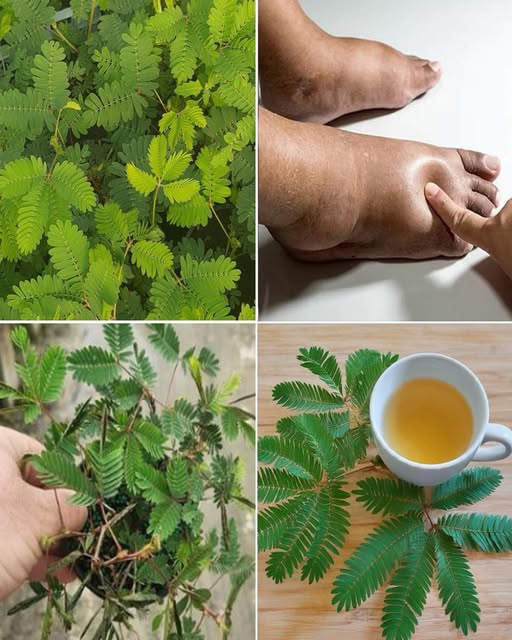Mimosa Pudica Tea: A Gentle Herbal Remedy with Ancient Roots
Mimosa pudica, often called the “sensitive plant,” “touch-me-not,” or “shy plant,” is best known for its fascinating ability to fold its leaves inward when touched. But beyond this charming botanical behavior lies a rich history of medicinal use. For centuries, cultures around the world have used different parts of this plant—including the leaves, stems, and roots—for a variety of traditional remedies. One of the most popular ways to tap into its potential is through Mimosa pudica tea, a soothing infusion that’s gaining renewed interest for its possible health benefits.

The Health Benefits of Mimosa Pudica Tea
While scientific research is still catching up to traditional knowledge, many herbalists and folk medicine practitioners believe Mimosa pudica may offer a range of gentle health benefits.
1. Digestive Support
In traditional herbal practices, Mimosa pudica is sometimes used to ease digestive upset. It may help with occasional diarrhea or mild gastrointestinal irritation, thanks to its astringent properties. Natural plant compounds like tannins and flavonoids are believed to calm the digestive tract and support overall gut balance.
2. Antimicrobial and Antiparasitic Potential
Some early studies suggest that Mimosa pudica extracts may have antimicrobial activity against certain types of bacteria. In folk medicine, it’s also been used to help manage intestinal parasites, although modern clinical evidence for this use is still limited.
3. Anti-Inflammatory Properties
Traditional healers often apply Mimosa pudica externally for minor wounds or inflamed skin, and the tea is occasionally consumed to soothe internal inflammation. While these uses are largely anecdotal, they hint at the plant’s natural anti-inflammatory potential.
4. Wound Healing and Skin Care
Poultices made from the leaves or roots are sometimes used on minor cuts, insect bites, or rashes. Cooled Mimosa pudica tea can also be used as a gentle skin rinse to reduce irritation or redness.
5. Calming and Relaxing Effects
In some traditional systems, Mimosa pudica is considered a mild sedative or nervine—an herb that helps relax the nervous system. People who drink the tea occasionally report feeling more at ease or sleeping more soundly, though these calming effects haven’t been deeply studied in clinical settings.
How to Make Mimosa Pudica Tea
Making your own Mimosa pudica tea at home is simple—just make sure you’re using clean, properly identified plant material.
Step 1: Source the Plant
Use only organically grown Mimosa pudica that’s free of pesticides or contaminants. You can grow it yourself or purchase dried leaves from a trusted herbal supplier.
Step 2: Dry the Leaves
Harvest the leaves and tender stems, then rinse gently to remove dirt. Air-dry them in a shaded, well-ventilated area until they become crisp and crumbly.
Step 3: Brew the Tea
- Use about 1 teaspoon of dried Mimosa pudica leaves per 1 cup of hot water.
- Bring fresh water to a boil, then pour it over the dried leaves in a cup or teapot.
- Cover and let it steep for 5 to 10 minutes.
- Strain and enjoy. Add honey or lemon if desired.
Taste Notes:
The flavor is earthy and mild, with a hint of herbal bitterness. You can adjust the steeping time to make it stronger or lighter depending on your taste.
Important Safety Tips
Although Mimosa pudica has a long history of traditional use, it’s important to approach any herbal remedy with care—especially when scientific research is still limited.
- Lack of Clinical Evidence: Most benefits are based on tradition or preliminary lab studies. More research is needed to confirm its effectiveness and safety in humans.
- Possible Side Effects: Some people may experience mild stomach upset, nausea, or allergic skin reactions. Always start with a small dose and observe how your body responds.
- Pregnancy & Breastfeeding: It’s best to avoid Mimosa pudica tea during pregnancy or while nursing unless approved by your doctor.
- Drug Interactions: If you’re on medication or have chronic health conditions, speak with a healthcare provider before adding Mimosa pudica to your routine.
- Correct Identification: Always ensure you’re using the correct species. Mistaken identity or contaminated plants can pose serious health risks.
Other Uses for Mimosa Pudica
- Topical Applications: Leaf paste or cooled tea can be applied to the skin for cuts, rashes, or mild irritation.
- Herbal Supplements: Some health brands sell Mimosa pudica in capsule form, often marketed for gut cleansing and parasite detox programs.
- Garden Beauty: Apart from its health uses, Mimosa pudica is also a popular ornamental plant because of its “shy” leaves that move with a touch.
Final Thoughts
Mimosa pudica tea offers a unique blend of traditional wisdom and modern curiosity. While many of its health claims are still being explored by science, it remains a fascinating herbal remedy with gentle potential. If you’re interested in trying it, be sure to use high-quality plant material, start slowly, and listen to your body. As with all herbal treatments, balance and informed choices are the keys to a safe and beneficial experience.





